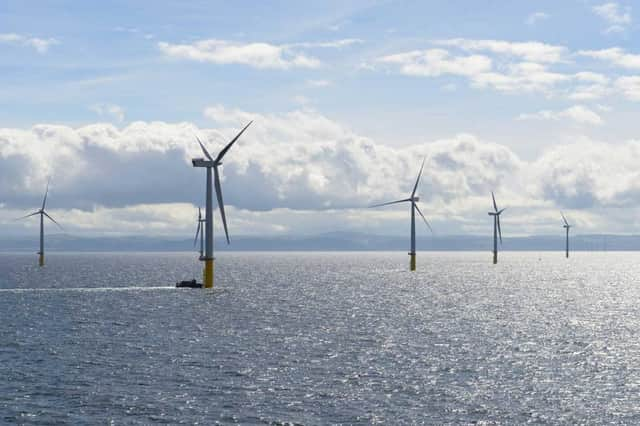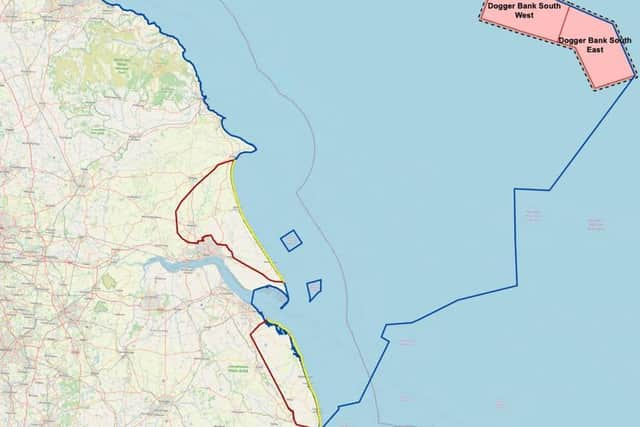Major offshore windfarm plans could connect to Lincolnshire coastline


The Dogger Bank South Offshore Wind Farms are planned to be built 100km offshore in the southern North Sea and covering an area of around 500km.
RWE Renewables, who are behind the plans and also building the Triton Knoll Offshore Windfarm, hope the stations could create more than 3,000MW of energy.
Advertisement
Advertisement
Documents before the Planning Inspectorate, which are currently scoping out the environmental impact of the build, have revealed the applicant is waiting for confirmation from National Grid around three potential points where cable arrays could rejoin land – and one of the options is 507km2 of land “between Grimsby and Skegness”.


The report said: “The precise landfall location(s) will be determined following confirmation of the onshore grid connection point(s) from National Grid ESO and will be subject to further site selection, considering relevant consultation feedback and initial survey data.”
More detailed analysis defines it as land south of Humberston, to the north of Skegness.
It later adds that the area of search for landfall locations does not extend further north, due to a “number of constraints within the Humber Estuary”.
Advertisement
Advertisement
Councils have already been notified of the plans, however, due to the current status of the application, have not yet been formally consulted on the plans.
Once the National Grid confirms where it will allow the connection to be made, then formal consultation will start.
According to the Planning Inspectorate the full application for the windfarm is expected to be submitted in Quarter 4 of 2023.
Last month, RWE confirmed that it had completed all the major onshore electrical system construction works associated with Triton Knoll Offshore Wind Farm.
Advertisement
Advertisement
The works, which commenced in September 2018, involved laying 57km of 220kV underground cable from the project’s landfall location near Anderby Creek to the newly constructed Triton Knoll Onshore Substation near Bicker Fen.
A further 1.8km of 400kV cabling was installed to allow connection into the UK national grid at the existing National Grid Bicker Fen Substation.
The Triton Knoll team has been proactively involved in the community throughout the construction phase. During the onshore works, Triton Knoll made £500,000 of funding available through the Triton Knoll Construction Community Fund, which has already benefited 57 local projects. Over £20,000 of funding has also been provided to local projects in the first funding round of the Triton Knoll Annual Community Fund which will be available throughout the operational lifecycle of the offshore wind farm.
The Annual Fund is open to support community projects located near the landfall at Anderby Creek and the onshore substation at Bicker Fen. The new fund, which is administered by the Lincolnshire Community Foundation, will contribute to vibrant, healthy and sustainable communities while promoting community spirit and engagement.
Advertisement
Advertisement
The offshore wind farm generated its first electricity in February 2021. First generation marked a key milestone for the project partners as it delivered renewable electricity from the offshore wind farm to homes and businesses for the first time. The project announced the successful completion of turbine installation in September, commissioning works continue offshore and, once fully operational, Triton Knoll Offshore Wind Farm1 will generate enough electricity to meet the needs of around 800,000 homes each year, helping to decarbonise the UK’s energy system.